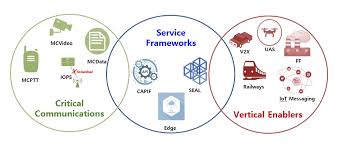Exploring the Future of 5G Wireless Systems: Innovations and Research Trends
telcomatraining.com – The future of 5G wireless systems is shaping up to be one of the most transformative technological advancements of the 21st century. As industries and consumers continue to demand faster connectivity, lower latency, and greater network efficiency, researchers and innovators are pushing the boundaries of what 5G technology can achieve. This article explores the key innovations and research trends that are driving the next phase of 5G evolution.
The Evolution Beyond Traditional 5G
5G is not just about faster internet on smartphones; it is the foundation for a fully connected society. From smart cities and autonomous vehicles to remote healthcare and industrial automation, 5G serves as the critical backbone. The future of 5G will see a shift towards 5G Advanced, sometimes referred to as 5.5G, offering even greater capabilities. Key improvements include enhanced mobile broadband (eMBB), ultra-reliable low-latency communication (URLLC), and massive machine-type communication (mMTC).
Researchers are now focused on improving network intelligence through AI and machine learning. These technologies help optimize resource allocation, manage network congestion, and predict maintenance needs, leading to better service quality and operational efficiency.
Innovative Technologies Shaping 5G’s Future
Several breakthrough technologies are playing a crucial role in advancing 5G:
- Massive MIMO (Multiple Input Multiple Output): Massive MIMO significantly increases the capacity and coverage of 5G networks by using hundreds of antennas at the base station, allowing multiple users to be served simultaneously without interference.
- mmWave and Terahertz Communications: Millimeter-wave (mmWave) frequencies are crucial for delivering extremely high data rates. Meanwhile, researchers are exploring terahertz (THz) bands for future 6G applications, aiming for even faster speeds and lower latencies.
- Network Slicing: This innovation enables multiple virtual networks to operate on a shared physical infrastructure, each tailored to different application requirements. For instance, a slice optimized for autonomous driving can coexist with another optimized for video streaming.
- Edge Computing: By bringing computing resources closer to the user, edge computing reduces latency and enables real-time applications such as augmented reality (AR) and virtual reality (VR).
Research Trends Driving 5G Development
The global research community is actively investigating various aspects to unlock the full potential of 5G:
- Energy Efficiency: As the number of connected devices grows, so does the energy consumption of wireless networks. Researchers are developing energy-saving protocols and hardware innovations to make 5G greener.
- Security Enhancements: With critical applications depending on 5G, cybersecurity is more important than ever. Research focuses on securing the network against sophisticated threats, including encryption methods and AI-driven threat detection.
- Integration with AI and IoT: The integration of Artificial Intelligence (AI) and the Internet of Things (IoT) with 5G is a major trend. Smart sensors, autonomous devices, and AI-powered network management systems will revolutionize industries ranging from healthcare to manufacturing.
- 6G Preparations: Although 5G is still being deployed globally, preliminary work on 6G has already started. Future networks are expected to achieve data rates up to 100 times faster than 5G and offer near-instant communication.
Challenges Ahead
Despite the promising outlook, several challenges remain. High deployment costs, spectrum availability, and interoperability among devices and networks are ongoing concerns. Additionally, ensuring equitable access to 5G technology across urban and rural areas remains a critical issue that must be addressed.
Conclusion
The future of 5G wireless systems is incredibly bright, driven by groundbreaking innovations and relentless research. As technology continues to evolve, 5G will not only meet current connectivity demands but also pave the way for future breakthroughs such as autonomous transportation, smart healthcare, and immersive virtual experiences. Businesses, governments, and consumers alike must stay informed and adapt to the dynamic landscape of 5G to fully harness its transformative power.
As we move forward, staying ahead of emerging 5G innovations and research trends will be key to thriving in a hyper-connected world.






